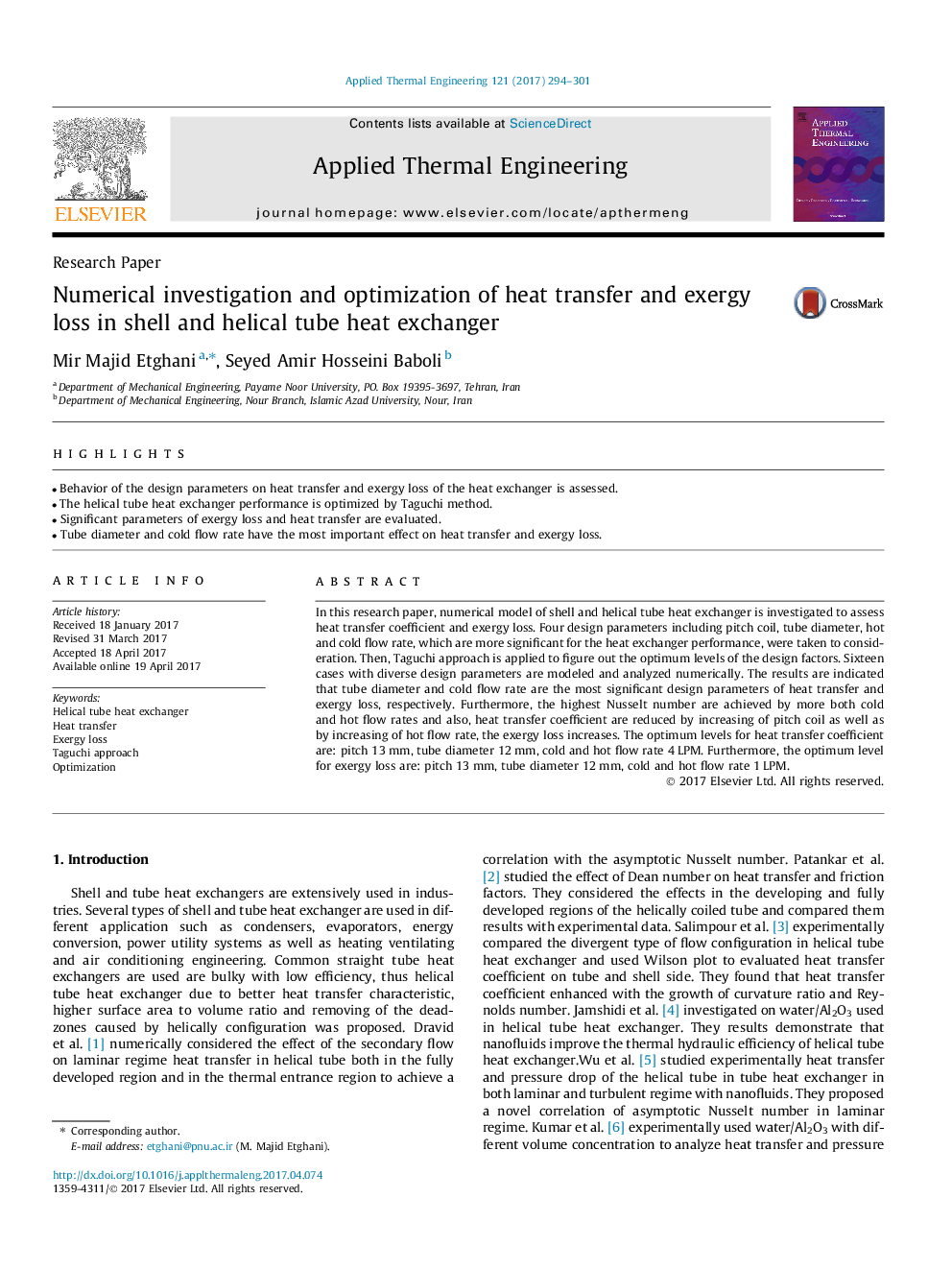| Article ID | Journal | Published Year | Pages | File Type |
|---|---|---|---|---|
| 4991082 | Applied Thermal Engineering | 2017 | 8 Pages |
Abstract
In this research paper, numerical model of shell and helical tube heat exchanger is investigated to assess heat transfer coefficient and exergy loss. Four design parameters including pitch coil, tube diameter, hot and cold flow rate, which are more significant for the heat exchanger performance, were taken to consideration. Then, Taguchi approach is applied to figure out the optimum levels of the design factors. Sixteen cases with diverse design parameters are modeled and analyzed numerically. The results are indicated that tube diameter and cold flow rate are the most significant design parameters of heat transfer and exergy loss, respectively. Furthermore, the highest Nusselt number are achieved by more both cold and hot flow rates and also, heat transfer coefficient are reduced by increasing of pitch coil as well as by increasing of hot flow rate, the exergy loss increases. The optimum levels for heat transfer coefficient are: pitch 13Â mm, tube diameter 12Â mm, cold and hot flow rate 4Â LPM. Furthermore, the optimum level for exergy loss are: pitch 13Â mm, tube diameter 12Â mm, cold and hot flow rate 1Â LPM.
Related Topics
Physical Sciences and Engineering
Chemical Engineering
Fluid Flow and Transfer Processes
Authors
Mir Majid Etghani, Seyed Amir Hosseini Baboli,
